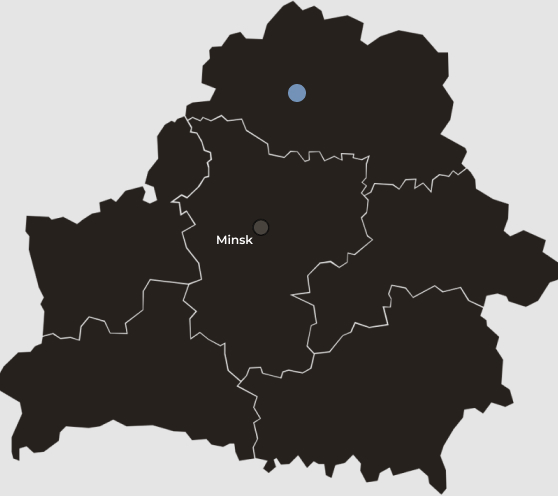Roads are different, just like people. If you travel often, you surely know their different character types: straight and wide highways, winding provincial roads leading through cozy towns and villages, unpredictable field-paths, old cobbled tracks… And in each country these characters are different. But some roads have especially impressive fates: they bear the imprints of distant epochs and keep the memories of the hoary antiquity even centuries later.
Today, I would like to tell you about a road like this in Belarus. Actually, it is among my favorite ones. This is the road leading from Polack to Hlybokaje and further to Vilnius. The road between two historical capital cities.

Several centuries ago, rulers of vast and powerful Grand Duchy of Lithuania could travel by this road. Obviously, not by chance, less than a century ago, the local people called this way “Alhierd’s road” or “Vitaut’s road” – by names of glorious and wise rulers of the country that has long disappeared from geographical maps but stayed in historical documents, chronicles and poems as the legendary golden age of these lands.
Today, it takes three hours and a half to get from Vilna (present Vilnius) to Polack by car. Add the time for all the procedures related to crossing the state border. Historians say, half a thousand years ago, it took three days though there were no borders there. Nevertheless, famous prince Vitaut who lived in the 14-15th centuries often travelled across his country and, certainly, visited Polack – one of the biggest and most strategically important cities. The people’s collective memory saved these episodes. Back in the middle 19th century, researchers of the local folklore found an unusual stone here. Its top was flat, and there were six round hollows on it. The local people told the legend that Vitaut stopped there and ate his dinner served right on this unusual stone called “Vitaut’s plates” by the folk.
In the early 1920ies, one of the most original and mystic Belarusian artists of the 20th century Yazep Dradzovich travelled across these places and made a lot of drawings and paintings from life. One of his pictures is titled as “Vitaut’s bridges”.
Soon after that, another outstanding figure of the Belarusian culture, scientist and writer Vaclau Lastouski wrote his most impressive novel “The Labyrinths”. Its protagonist travels… right! From Vilna to Polack, and his trip results in a thrilling adventure that actually discovers a whole philosophical theory about the hoary past of Belarus.
Once, driving along this road, I pointed out a place that etched into my heart. I saw a huge spreading oak tree by the road and a table with benches under the tree. That time, the table was covered with a white table-cloth, and it looked as if someone was waiting for welcome guests. I hurried up that time but I promised to myself that I would certainly be back one day.
And later, being in Polack again, I recalled that point on the map and I decided that I had to go the immediately. It was evening, the weather worsened. A wind got up and brought a terrible black and blue thundercloud, first big and heavy drops of rain fell into the road dust. But I decided I would not change my plans – and drove out the city.
The frightening thundercloud sprayed some raindrops and passed by. A wide and bright rainbow emerged by the time I reached the oak. It was there impressively long and disappeared only at sunset. I stopped my car on the wayside, came up to the powerful tree and looked at the sunrays that penetrated the clouds.
It seemed to me that it was the greatest of all gifts I could get that day. However, there was one more surprise ahead. I turned around my car to drive back and soon, my look caught the thing I didn’t pay attention to before. I saw the reverse side of a common concrete stele – they are commonly installed in our country to mark the borders of administrative districts – and read: “The good will happen”.
Remember it or even write down, my friends: the good will surely happen. And don’t be afraid of a thunderstorm.
Sincerely yours,
Volha Blazhevich
FM-Sender und –Frequenzen:
Rakitniza - 106.2 MHz
Grodna - 95.7 MHz
Swislatsch - 104.4 MHz
Geraneni - 99.9 MHz
Braslaŭ - 106.6 MHz
Mjadsel’ - 102.0 MHz